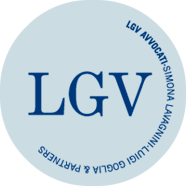BREWMASTER WIPES THE SMILE OFF MORETTI FOR “LA BIANCA” SIGN. (BUT THE CASE IS STILL OPEN).
14/02/2019
A famous German brew master, holder of the German trademark “la Bianca” and assisted by LGV partners Luigi Goglia and Tankred Thiem, successfully opposed the registration of a similar European trademark filed by the notorious beer producer Heineken (today’s holder of the Italian brand “Birra Moretti”). The decision, issued by EUIPO after the long opposition procedure, confirmed that the prior sign “la Bianca” is a legitimate ground for refusing the registration of the sign “La Bianca” filed by Heineken Italia S.p.a.
Con On January 30th, 2019, EUIPO opposition division rejected the application for the registration of the figurative sign “La Bianca”  filed by Heineken S.p.a. in 2016. It was found that it was lacking the novelty requirement as the German brew master already registered and used the sign “la Bianca” for beer and similar products.
filed by Heineken S.p.a. in 2016. It was found that it was lacking the novelty requirement as the German brew master already registered and used the sign “la Bianca” for beer and similar products.
In first place, EUIPO ascertained that the prior sign was genuinely used by the brew master from 2011 to 2016 to identify his own craft beer. In second place, it was found that the sign filed by Heineken for registration was confusingly similar to the prior German trademark, so the application was rejected.In particular, EUIPO held that the distinctive element in both signs was the identical expression “La Bianca”, while the figurative and word element of Heineken’s sign (the notorious Moretti’s mustache bearing the general trademark “Birra Moretti” and “Luigi Moretti”) are not likely to strike at the attention of the average consumer. Therefore, the signs were considered extremely similar – not to say identical – as long as the products – beer – were found to be related.
The EUIPO decision is of “political” importance, as it shows that the trademark hold by a craft brew master is enough to combat the monopoly of multinationals in the field of beer production and trade. The decision also outlines that companies tend to create “special” signs or add further elements to their “general” trademarks to characterize new product lines. In this case the prior sign “la Bianca” could be confusingly be considered a new line of Heineken beer, which is not true. Heineken further claimed that it should be taken into consideration the reputation in the field of its general trademark “Birra Moretti”. The office rejected the argument on grounds of the EU Trademark Regulation, according to which the exclusive rights on the sign are conferred by the registration of the sign. Hence, whatever happened before the application was filed is not relevant for the registration.
The decision is not definitive, and it has already been appealed before the appeal commission of EUIPO. Who knows whether the German brew master will finally wipe the smile off Moretti for “la Bianca”?

